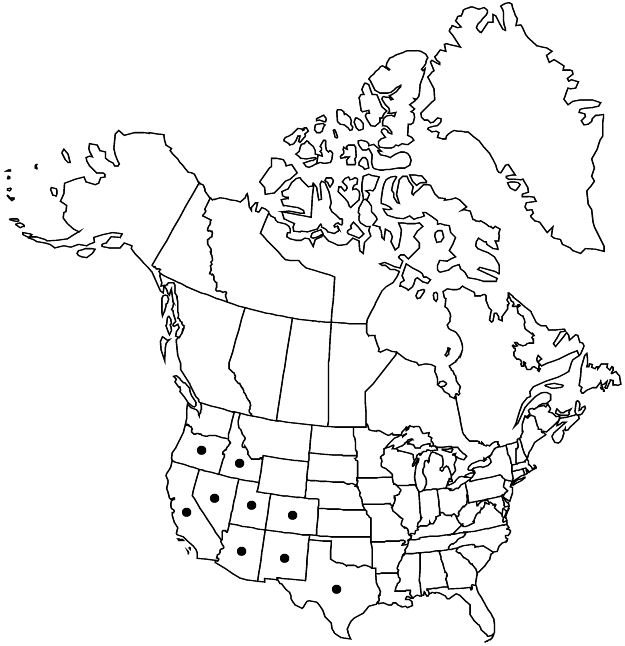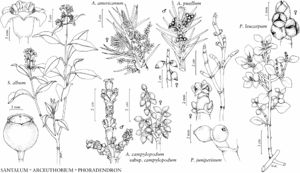Phoradendron juniperinum
Mem. Amer. Acad. Arts, n. s. 4: 58. 1849.
Subshrubs, erect, 1–2(–2.5) dm, dioecious. Stems green to olive green, glabrous; internodes terete, 5–20 × 1.5–2.5 mm. Leaves green to olive green, scalelike; blade triangular, 2 mm, apex acute; basal phyllotaxy transverse. Staminate inflorescences 3–5 mm; peduncle with 1 internode, 3 mm; fertile internode usually 1, 6-flowered, seriation unknown, flowers 3 (2 proximal, 1 distal) per bract. Pistillate inflorescences 3–5 mm; peduncle with 1 internode, 2 mm; fertile internode 1, 2-flowered, flowers 1 per bract. Flowers: petals 3–4, 0.5–1 mm. Berries white or pinkish, globose to ellipsoid-globose, 4–5 × 3 mm, glabrous. 2n = 28.
Phenology: Flowering summer–early fall.
Habitat: Forests or woodlands with juniper or incense cedar.
Elevation: 800–2900 m.
Distribution

Ariz., Calif., Colo., Idaho, Nev., N.Mex., Oreg., Tex., Utah, Mexico (Baja California, Chihuahua, Coahuila, Sonora).
Discussion
Phoradendron juniperinum is often classified as having two subspecies, subspp. juniperinum and libocedri. Subspecies juniperinum is found throughout the species' range as globose infections on various species of Juniperus. The larger, pendent parasites of Calocedrus from California have been recognized as subsp. libocedri. J. Kuijt (2003) argued that this habit could be a host response because intermediate morphologies are known; the two taxa are not recognized here.
Selected References
None.
